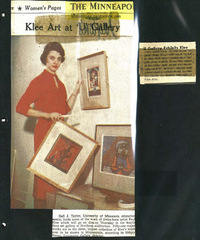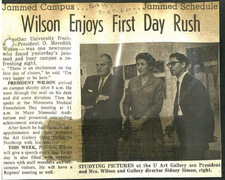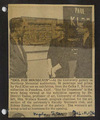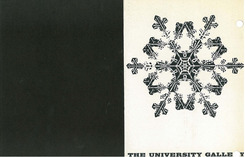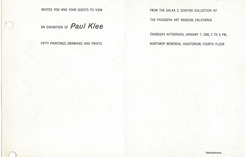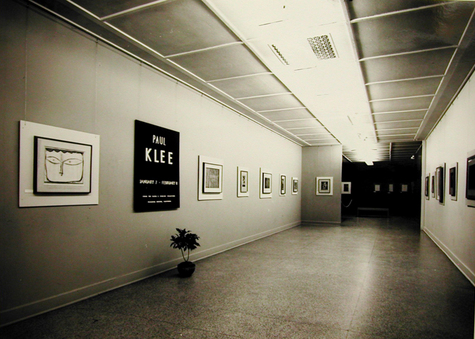For many years, it has been known, as the story goes, that one of WAM’s Georgia O’Keeffe paintings, Oriental Poppies, “may have been selected for purchase by popular vote.” So reads the label that describes this painting, currently on display in WAM’s Woodhouse Gallery.
The story, told by WAM tour guides, and believed by staff and visitors for many years, unfolds simply like this: An exhibition of the work of artists represented by gallery owner and dealer Alfred Stieglitz was held at the gallery in 1937. Visitors to the exhibit voted for their favorite work. Oriental Poppies won.
This story… however… is a myth.
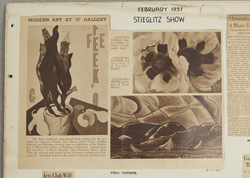 In February of 1937, the Gallery did exhibit a Stieglitz show, which showcased the “famous five” from his gallery at An American Place – Georgia O’Keeffe, John Marin, Charles Demuth, Arthur Dove, and Marsden Hartley. Amongst the 40 or so canvases in the exhibit was Oriental Poppies by O’Keeffe. There was, however, no popular vote of the visitors to select a piece to be purchased by the University.
In February of 1937, the Gallery did exhibit a Stieglitz show, which showcased the “famous five” from his gallery at An American Place – Georgia O’Keeffe, John Marin, Charles Demuth, Arthur Dove, and Marsden Hartley. Amongst the 40 or so canvases in the exhibit was Oriental Poppies by O’Keeffe. There was, however, no popular vote of the visitors to select a piece to be purchased by the University.
A vote did take place, however, amongst the members of the Fine Arts Committee, a body on campus that oversaw the gallery and other issues related to the arts on campus. Their unanimous vote was an agreement to make a formal request to President Lotus Coffman to purchase Oriental Poppies. Correspondence found within the folder titled, “Fine Arts Committee” in Box 110 of the WAM collection reveals the details behind the acquisition of the painting upon the insistence of the Committee.
In a February 19, 1937 correspondence from Malcolm Willey to President Coffman, Willey outlines a meeting of the Fine Arts Committee:
The Fine Arts Committee held a meeting this noon to discuss, among other matters, the purchase of fine arts material. The Committee believes the University should choose its purchases carefully, especially those that involve any considerable sum of money. The members present were unanimous in urging that the University acquire one painting from the collection sent here for exhibition recently by Mr. Alfred Stieglitz. The artists represented in the group of five are all of outstanding distinction. There were several canvasses that would be an asset to any gallery, anywhere. The committee, after careful discussion, voted unanimously to recommend the purchase, if at all possible, of Poppies by Georgia O’Keeffe. The one argument raised against this during the discussion is the fact that the University does own one painting by her. However, the two are of different periods; moreover, her place in contemporary art is such that there is little risk in buying her work. The list price (for insurance purchases) of this canvas is $4,000. It can be had for 33 1/3 per cent discount, or $2666.67. This is a greater sum than we have ever spent for a painting, yet good work by distinguished artists command high prices. Those who favored this acquisition are: Professor Burton, Professor Minnich, Professor Harriet Goldstein, Professor R. C. Jones, and Professor David Robb. I, personally, have no doubt in my mind concerning the value to be received in this picture at the quoted price. It is a powerful painting and exceedingly decorative. It has nothing of the abstract or any other qualities that make it difficult to understand and enjoy. It is only because there is, potentially, some possibility of criticism of the University in purchasing a painting at this price that I raise the question at all with you. If you feel there is no reason for hesitating, I would instantly join the others in their recommendation.”
Coffman replies to Willey on February 20th, 1937 and indicated that he agreed that the University should have the painting “but as cheaply as possible.”
Willey wrote back to Coffman on February 24th, 1937, “Mrs. Lawrence is to see if this can be had for $2500 flat.”
On February 25th, 1937, Willey wrote to Ruth Lawrence, “With the approval of President Coffman, I am asking Mr. Middlebrook to make available the sum of $2500 to be placed in the budget of the University Art Gallery for the purchase of one or more original works of art.”
(Middlebrook was the University’s comptroller.)
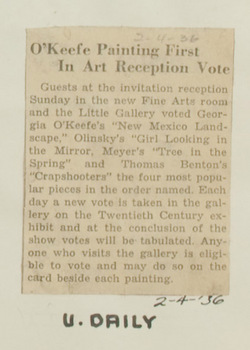 In February of 1936, one year prior to the mythologized 1937 Stieglitz show, the gallery mounted an exhibit titled, “The Twentieth Century,” which contained representative examples of contemporary works loaned to the gallery, some of which included artworks lent by Stieglitz.
In February of 1936, one year prior to the mythologized 1937 Stieglitz show, the gallery mounted an exhibit titled, “The Twentieth Century,” which contained representative examples of contemporary works loaned to the gallery, some of which included artworks lent by Stieglitz.
It is in conjunction with this February 1936 twentieth century exhibit that there was a vote, “planned to discover student taste.” As the clipped MN Daily articles contained in the University Gallery press books indicated, “Each day a new vote is taken in the gallery on the Twentieth Century exhibit and at the conclusion of the show votes will be tabulated. Anyone who visits the gallery is eligible to vote and may do so on the card beside each painting.”
O’Keeffe’s piece, New Mexico Landscape won first place in the three-week contest.
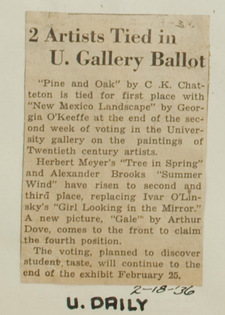
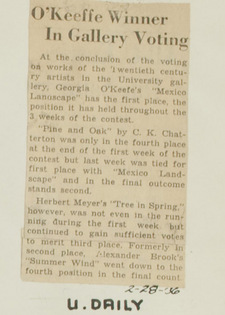
While there is partial truth to this myth – that a vote was involved in selection and purchase of Georgia O’Keeffe’s Oriental Poppies – it was a unanimous recommendation of the Fine Arts Committee in 1937, and not a democratic visitor vote, that resulted in the acquisition of the painting.
Regardless of the specifics, what these two February exhibits clearly show is the popp-ularity of Georgia O’Keeffe at the University of Minnesota.
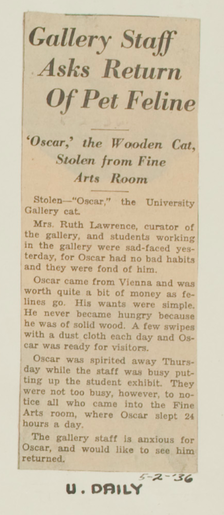
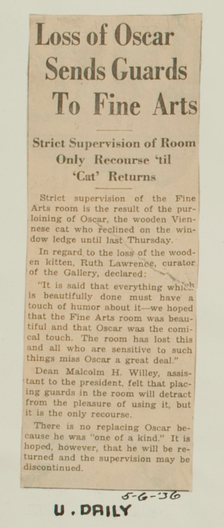




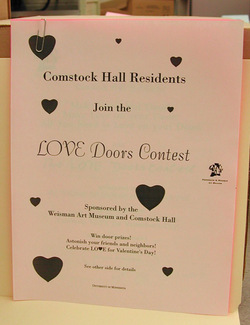 The Love Doors Contest
The Love Doors Contest